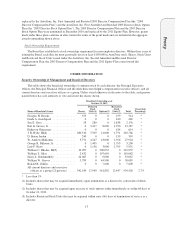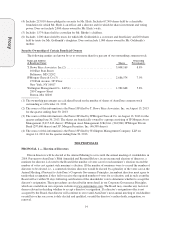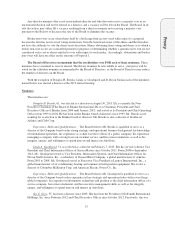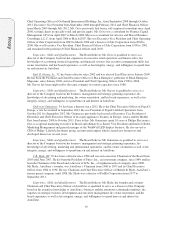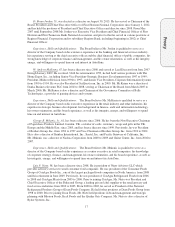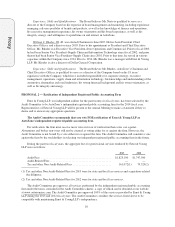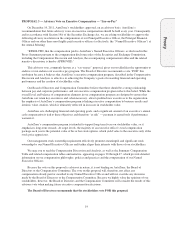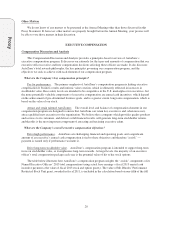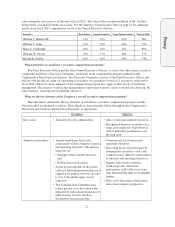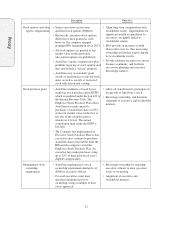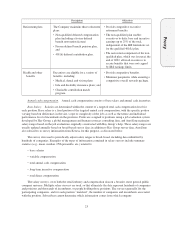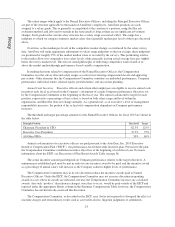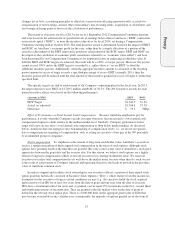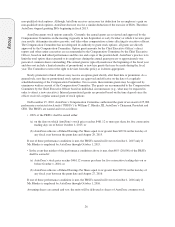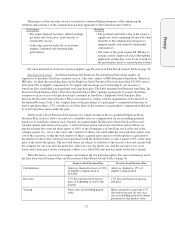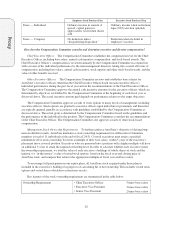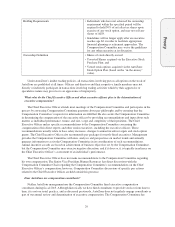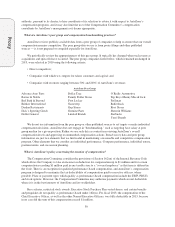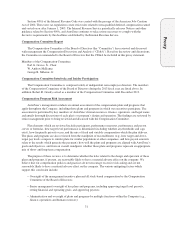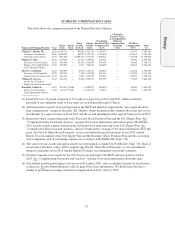AutoZone 2013 Annual Report Download - page 33
Download and view the complete annual report
Please find page 33 of the 2013 AutoZone annual report below. You can navigate through the pages in the report by either clicking on the pages listed below, or by using the keyword search tool below to find specific information within the annual report.
Proxy
Description Objectives
Retirement plans The Company maintains three retirement
plans:
• Non-qualified deferred compensation
plan (including a frozen defined
benefit restoration feature)
• Frozen defined benefit pension plan,
and
• 401(k) defined contribution plan.
• Provide competitive executive
retirement benefits.
• The non-qualified plan enables
executives to defer base and incentive
earnings up to 25% of the total,
independent of the IRS limitations set
for the qualified 401(k) plan.
• The restoration component of the non-
qualified plan, which was frozen at the
end of 2002, allowed executives to
accrue benefits that were not capped
by IRS earnings limits.
Health and other
benefits
Executives are eligible for a variety of
benefits, including:
• Medical, dental and vision plans;
• Life and disability insurance plans; and
• Charitable contribution match
program.
• Provide competitive benefits.
• Minimize perquisites while ensuring a
competitive overall rewards package.
Annual cash compensation. Annual cash compensation consists of base salary and annual cash incentives.
Base Salary. Salaries are determined within the context of a targeted total cash compensation level for
each position. Base salary is a fixed portion of the targeted annual cash compensation, with the specific portion
varying based on differences in the size, scope or complexity of the jobs as well as the tenure and individual
performance level of incumbents in the positions. Points are assigned to positions using a job evaluation system
developed by Hay Group, a global management and human resources consulting firm, and AutoZone maintains
salary ranges based on the job evaluations originally constructed with Hay Group’s help. These salary ranges are
usually updated annually based on broad-based survey data; in addition to Hay Group survey data, AutoZone
also subscribes to survey information from Kenexa for this purpose, as discussed below.
The survey data used to periodically adjust salary ranges is broad-based, including data submitted by
hundreds of companies. Examples of the types of information contained in salary surveys include summary
statistics (e.g., mean, median, 25th percentile, etc.) related to:
• base salaries
• variable compensation
• total annual cash compensation
• long-term incentive compensation
• total direct compensation
The salary surveys cover both the retail industry and compensation data on a broader, more general public
company universe. Multiple salary surveys are used, so that ultimately the data represent hundreds of companies
and positions and thousands of incumbents, or people holding those positions. The surveys generally list the
participating companies, and for each position “matched”, the number of companies and incumbents associated
with the position. Subscribers cannot determine which information comes from which company.
23


